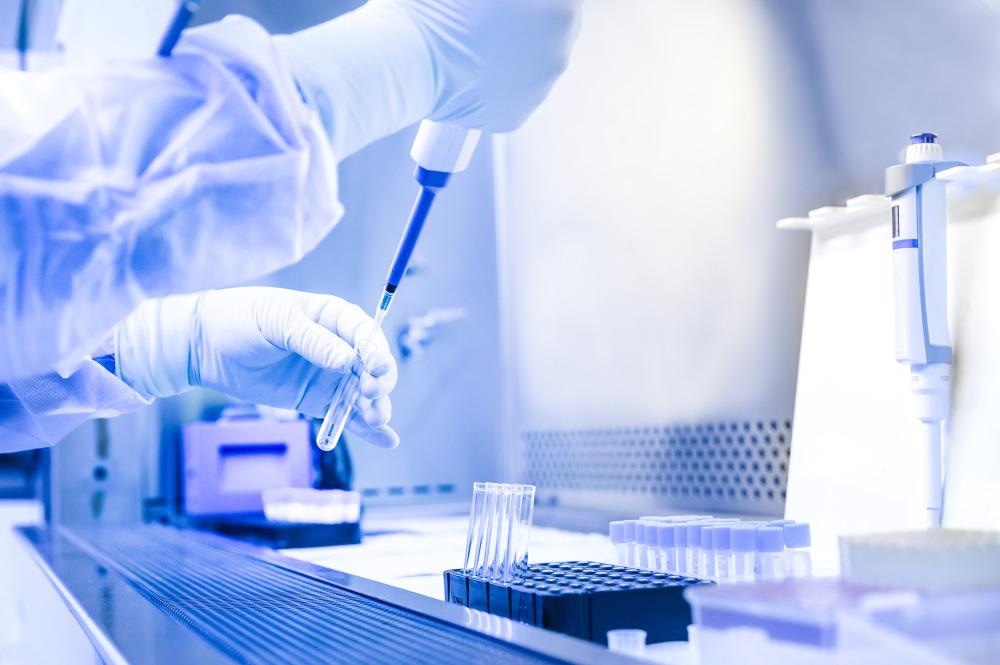What is biosafety?
Biosafety is a concept that works hand-in-hand with biosecurity. It is the implementation of specific practices and procedures, training and safety equipment, appropriate occupational health programs, and healthcare infrastructure to enable a country to safely and effectively work with potentially infectious microorganisms and other biological hazards.
The multiple components of biosafety are enforced to protect those working with the biological materials from harm, as well as prevent the public, environment, and wildlife from exposure to potentially contagious and harmful biological agents.
Biosafety frameworks are implemented in many laboratory settings, including academic and teaching laboratories, biological research and production laboratories, environmental research and analytical laboratories, and human and veterinary clinical and diagnostic laboratories.
Biosafety aims to eliminate, or at least significantly reduce the risk of biological contamination. To address all such potential risks, the field of biosafety encompasses three main concepts. The first is that of the biological hazard. This involves controlling the potential risk posed by exposure to biological agents that cause disease.
The second is biocontainment. This relates to measures that are taken to prevent the potential spread of infectious diseases. The final concept is that of bioprotection, which relates to the measures implemented to reduce the risk of misuse, international release, loss, or theft of dangerous pathogens or toxins.
To help agencies understand what measures to initiate, biosafety levels (BSLs) have been designed to define the level of risk posed by certain projects or activities involving potentially dangerous pathogens or toxins. In the US, these levels range from BSL-1 (the lowest level) to BSL-4 (the highest).

Image Credit: Eugene Lu/Shutterstock.com
Biosafety’s role in pandemic prevention
The COVID-19 pandemic highlighted the importance of adhering to biosafety protocol. As was witnessed with the spread of COVID-19, natural disease outbreaks pose a significant threat to global security, national economies, international trade, national and international travel, public health and safety, education, maternal health, and public trust in the government which runs the risk of inducing a state of collapse.
The SARS-CoV-2 virus and the disease it causes are considered to be some of the greatest threats facing humankind today. Part of the challenges the world faces due to the COVID-19 outbreak are cases of biosecurity. As outlined above, biosecurity is responsible for preventing potential risks to health and the environment posed by exposure to dangerous pathogens that cause disease.
Laboratories investigating the SARS-CoV-2 to develop effective vaccines and treatments as well as preventative measures require a biosafety containment level 3 laboratories (BSL-3). All preclinical development of vaccines requires this level of containment, meaning that around the world, the multiple research institutions that have developed or are developing vaccinations have required or are required to adhere to BSL-3 protocols.
The amount of research and development that has been triggered to combat the spread of COVID-19 has demonstrated the vital necessity of BSL-3 facilities in the prevention and monitoring of contagious diseases. Such facilities should be considered an integral part of any country’s public health services to ensure that all countries are prepared to respond effectively to emerging infectious diseases.
In contrast to BSL-2 facilities, there is great variation in BSL-3 facilities across the world, with more industrialized countries generally being home to more advanced facilities and the least developed countries often being left behind. In terms of preventing pandemics, all countries must have access to sufficient facilities to stop the global spread of infectious pathogens.
Recent outbreaks of infectious diseases have highlighted the importance of having such infrastructure already developed before an issue arises. While Innovative Developing Countries (IDCs) such as Brazil excelled at controlling the spread of the Zika virus, they struggled with controlling the COVID-19 pandemic due to the sparse and uneven geographic distribution of its BSL-3 facilities.
Additionally, the outbreaks of the Ebola virus, which required containment in biosafety level (BSL)-4 facilities, primarily impacted countries in Western Africa that are some of the poorest in the world. Therefore, there were no appropriate (BSL)-4 facilities to conduct necessary research and development to prevent the spread of the virus, contain it, and manage it. This led to international aid being called in to help tackle the outbreak. This is a problem, because, as was the case with COVID-19, in the case of a pandemic when all countries are fighting to control the spread of the virus at home, it reduces the aid they can send elsewhere. Countries lacking sufficient BSL facilities are at an increased risk of being unable to control the spread of infectious diseases, which also makes it more likely for the disease to spread beyond its borders.
Investments must be made to ensure that all countries have the infrastructure necessary to handle future potential pandemic-causing viruses and pathogens, including BSL facilities of all levels in sufficient numbers, evenly spread across the country.
Epidemiologists warn that there are currently a number of diseases with the potential to cause a pandemic, including the Nipah virus, the Mers virus (a type of coronavirus), and yellow fever. The establishment of BSL facilities will play a vital role in preventing these potential pandemics.
Sources:
- Bakanidze, L., Imnadze, P. and Perkins, D., 2010. Biosafety and biosecurity as essential pillars of international health security and cross-cutting elements of biological nonproliferation. BMC Public Health, 10(Suppl 1), p.S12. bmcpublichealth.biomedcentral.com/articles/10.1186/1471-2458-10-S1-S12
- Souza, T. and Morel, C., 2021. The COVID-19 pandemics and the relevance of biosafety facilities for metagenomics surveillance, structured disease prevention, and control. Biosafety and Health, 3(1), pp.1-3. https://www.sciencedirect.com/science/article/pii/S2590053620301191
- Stopping the next one: What could the next pandemic be? [Online]. BBC Future. Available at: www.bbc.com/future/article/20210111-what-could-the-next-pandemic-be (Accessed 13 October 2021)
Further Reading
Last Updated: Dec 21, 2021